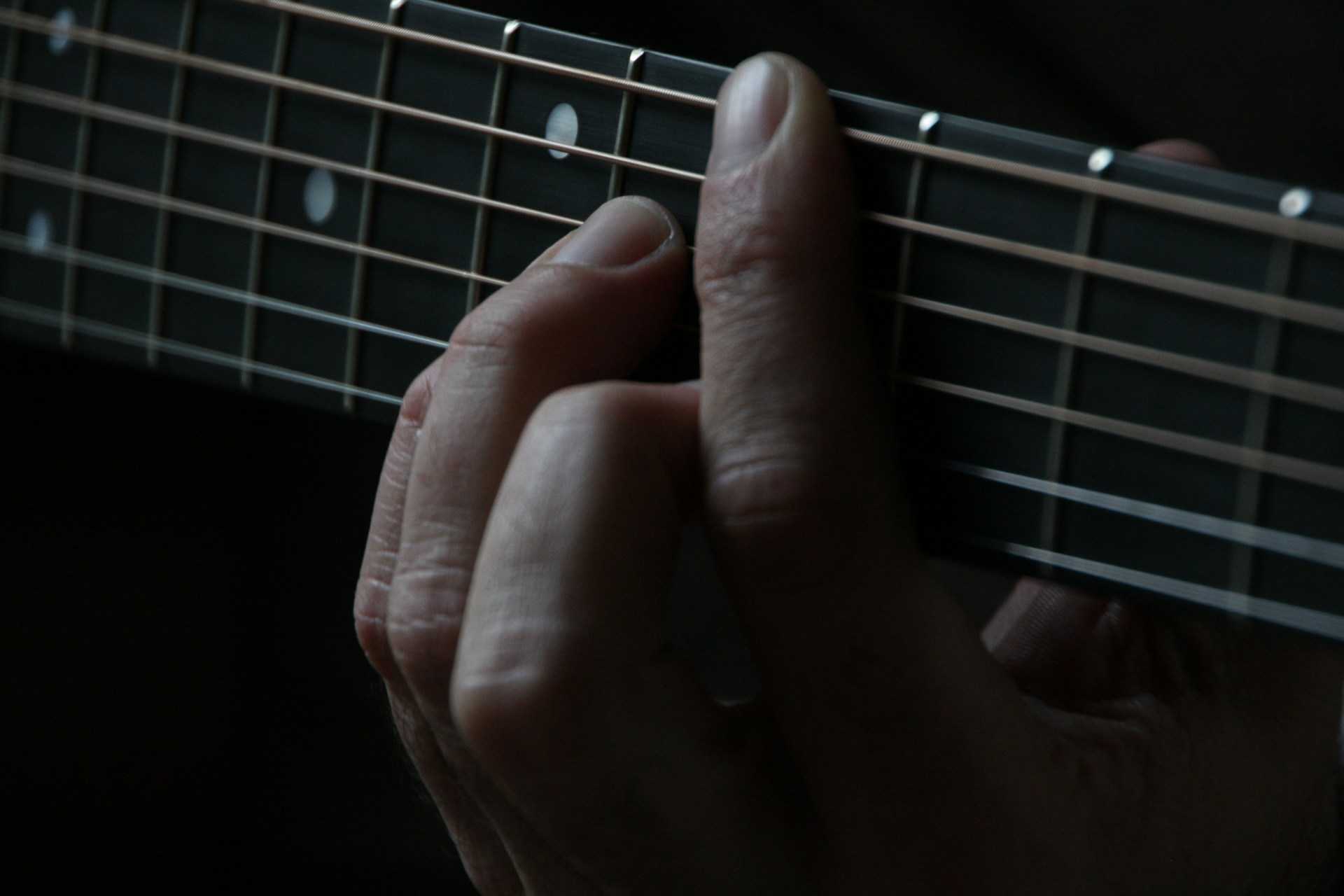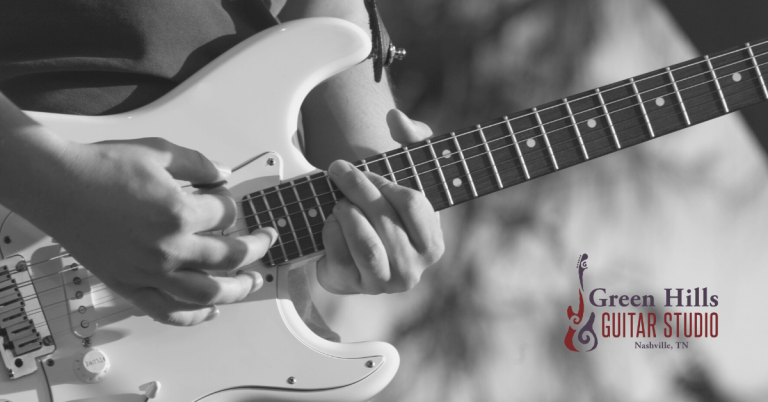The Essential Guide to the ii-V-I Progression for Guitarists
The ii-V-I progression is one of the most essential chord progressions in jazz and popular music, with its roots extending deeply into the history of Western music.
From Bach’s intricate counterpoint, which used similar progressions to modulate between keys, to today’s modern jazz compositions, understanding the ii-V-I progression is a fantastic place to start for guitarists looking to deepen their harmonic knowledge and improve their playing skills.
Let’s explore the world of the ii-V-I progression and discover how you can incorporate it into your playing.
The Music Theory Behind the ii-V-I Progression
The ii-V-I progression is one of the most fundamental and widely used chord sequences in music. It is especially prominent in jazz but also found in many other genres, such as blues, rock, and pop.
This progression consists of three chords, each derived from the major scale, and follows a specific order that creates a sense of movement and resolution. Understanding the theory behind this progression can significantly enhance your ability to improvise and compose music.
Breaking Down the Chords
The ii-V-I progression is constructed from diatonic harmony, which means all chords are derived from the notes of a single major scale. This progression has profoundly influenced Western music because it creates a compelling harmonic journey with a significant emotional impact.
- Movement: The ii chord introduces a subtle tension heightened by the V chord. The progression from ii to V establishes a pathway that naturally seeks resolution.
- Resolution: The transition from the V chord to the I chord provides a sense of release and fulfillment. This resolution is a crucial reason why the ii-V-I progression is prevalent in music, as it mirrors natural patterns of tension and release pleasing to the ear.
Here’s a detailed look at each chord within the ii-V-I chord progression:
ii: The Minor Seventh Chord
- Chord Quality: Minor seventh
- Harmonic Function: The ii chord is a pre-dominant chord, setting up the tension that resolves through the V chord to the I chord.
- Example in C Major: Dm7 (D-F-A-C)
- Explanation: In the key of C major, the ii chord (Dm7) includes the notes D, F, A, and C. This chord creates a slightly tense yet smooth sound that leads naturally to the V chord.
V: The Dominant Seventh Chord
- Chord Quality: Dominant seventh
- Harmonic Function: The V chord is the dominant chord, creating a strong tension that seeks resolution to the I chord.
- Example in C Major: G7 (G-B-D-F)
- Explanation: In C major, the V chord (G7) contains the notes G, B, D, and F. The tritone interval between B and F in G7 generates a strong pull towards the tonic chord, Cmaj7.
I: The Major Seventh Chord
- Chord Quality: Major seventh
- Harmonic Function: The I chord is the tonic, providing a sense of resolution and completion.
- Example in C Major: Cmaj7 (C-E-G-B)
- Explanation: The I chord (Cmaj7) in the key of C major consists of the notes C, E, G, and B. This chord serves as the final resting point, giving a feeling of closure and stability.
Practical Applications
Understanding the ii-V-I progression is crucial for various aspects of music-making:
- Improvisation: Jazz musicians frequently use the ii-V-I progression as a framework for improvisation. Knowing how these chords function together allows for more fluid and expressive soloing.
- Composition: This progression is a foundational building block in songwriting and arranging, providing a reliable structure that can be embellished and varied.
- Chord Substitution and Variation: Advanced players often use substitutions and variations of the ii-V-I progression to add complexity and interest to their music. Techniques such as tritone substitution or adding chord extensions (e.g., 9ths, 11ths, 13ths) can significantly enrich the harmonic palette.
Tips for Practicing the ii-V-I Progression
Combining theoretical knowledge with practical application is essential for mastering the ii-V-I progression. Here are some tips to help you practice and integrate this progression into your playing:
Know Your Scales
- Major Scales Mastery: The major scale derives from the ii, V, and I chords. Make sure you are comfortable with major scales in all twelve keys. Practice these scales regularly to identify any key’s ii, V, and I chords.
- Tip: Use a scale book or app to aid your practice, and try to play the ascending and descending scales.
Learn Basic Chord Shapes
Learn and practice the basic shapes for minor seventh (m7), dominant seventh (7), and major seventh (maj7) chords. Start with the most common positions and fingerings on the fretboard.
- Dm7 Shape: Example in C major – Dm7 (X57565)
- G7 Shape: Example in C major – G7 (353433)
- Cmaj7 Shape: Example in C major – Cmaj7 (X35453)
- Tip: Focus on playing these shapes cleanly and consistently, ensuring that each note rings out clearly.
Practice Slowly and Gradually Increase Speed
- Slow Practice: Begin by practicing the progression slowly. This allows you to focus on the accuracy of each chord change and develop muscle memory.
- Tip: Use a metronome set to a slow tempo. Start with 60 BPM and gradually increase the speed as you become more comfortable with the transitions.
- Incremental Speed Increase: As you become more proficient, slowly increase the metronome speed in small increments, ensuring clean transitions and timing.
Listen and Learn
- Active Listening: Listen to jazz standards and other genres where the ii-V-I progression is commonly used. Pay close attention to how musicians use the progression within different songs.
- Tip: Create a playlist of songs featuring the ii-V-I progression (refer to the list in the previous section). Listen to these songs and identify when and how the progression is used.
- Play Along with Recordings: Once familiar with the sound of the ii-V-I progression, try playing with recordings of jazz standards. This will help you internalize the progression and improve your ability to play it in a musical context.
- Tip: Use slow-downer software or apps to slow down recordings without changing the pitch, allowing you to practice at a manageable pace.
Additional Practice Techniques
- Arpeggios and Scale Practice: Practice playing arpeggios for each chord in the ii-V-I progression. This helps in understanding the chord tones and aids in improvisation.
- Tip: Practice playing arpeggios in different positions on the fretboard to gain flexibility and familiarity with the neck.
- Voice-leading exercises: Focus on smooth voice leading by connecting chord tones with minimal movement between chords. This creates a more polished and sophisticated sound.
- Tip: Practice transitioning between chords while keeping the familiar tones as stationary as possible and moving other notes to the nearest chord tones.
- Transpose the Progression: Enhance your versatility by practicing the ii-V-I progression in all twelve keys. This improves your technical skills and helps you become more adaptable in different musical situations.
- Tip: Use a circle of fifths chart to practice the progression in different keys systematically.
With consistent practice, these practical tips will improve your overall musicianship and ability to navigate chord changes smoothly in various musical contexts.
Advanced Harmonic Techniques
For intermediate players looking to expand their use of the ii-V-I progression, exploring advanced techniques and variations can add depth and complexity to your playing. Here are some ideas to consider:
- Chord Extensions: Add color to your chords by incorporating extensions such as ninths, elevenths, and thirteenths (e.g., Dm9, G13, Cmaj9).
- Altered Dominants: Use altered dominant chords to create tension before resolving to the I chord (e.g., G7#5, G7b9).
- Substitutions: Explore chord substitutions to add variety, such as tritone substitution (e.g., replacing G7 with Db7).
- Voice Leading Techniques: Practice connecting chords with minimal movement in all voices for a more polished sound.
- Modal Interchange: Borrow chords from parallel modes to spice up the progression (e.g., Dm7b5 from the parallel minor).
Common Mistakes and Solutions
Mastering the ii-V-I progression can be challenging, but avoiding these common mistakes will help you progress more effectively:
Incorrect Chord Shapes
- Mistake: Playing incorrect chord shapes can lead to dissonance and an unclear sound.
- Solution: Take time to practice each chord shape slowly and accurately. Ensure your fingers are correctly positioned on the strings to produce precise, clean tones.
Poor Transitioning Between Chords
- Mistake: Rushing chord transitions can result in sloppy playing and disrupt the flow of the progression.
- Solution: Practice transitioning between chords slowly at first. Focus on smooth movements and accurate finger placements. Gradually increase your speed as your muscle memory develops.
Ignoring Rhythm
- Mistake: Remembering to practice with a metronome can lead to consistent timing and rhythm.
- Solution: Use a metronome to maintain a steady rhythm. Start at a slow tempo and gradually increase the speed as you become more comfortable with the chord changes.
Lack of Theory Understanding
- Mistake: Not understanding the music theory behind the progression can hinder your ability to play with intention and musicality.
- Solution: Spend time learning the theory behind the ii-V-I progression. Understand how each chord functions within the progression and relates to the key. This knowledge will enhance your improvisation and composition skills.
Neglecting All Keys
- Mistake: Restricting practice to a single key limits your versatility and adaptability in different musical situations.
- Solution: Practice the ii-V-I progression in all 12 keys. Use a circle of fifths chart to practice each key systematically. This will develop a more rounded skill set and improve your technical proficiency.
Addressing these common mistakes and implementing the suggested solutions will help you make consistent progress!
Train Your Ears: Songs Featuring the ii-V-I Progression
Listening to how it is used in various songs can be incredibly beneficial to understand and fully appreciate the ii-V-I progression. Here is a list of 10 songs across different genres where you can hear the ii-V-I progression in action:
- “Autumn Leaves” by Joseph Kosma: A jazz standard often played in a minor key, featuring the ii-V-I progression prominently.
- “All the Things You Are” by Jerome Kern: Another jazz classic that utilizes the ii-V-I progression in several sections.
- “Blue Bossa” by Kenny Dorham: A bossa nova piece that incorporates the ii-V-I progression, blending jazz and Latin influences.
- “I Got Rhythm” by George Gershwin: A quintessential jazz standard where the ii-V-I progression forms the backbone of the song’s harmony.
- “Fly Me to the Moon” by Bart Howard: A popular jazz tune that extensively uses the ii-V-I progression throughout its chord changes.
- “Satin Doll” by Duke Ellington: This jazz piece features the ii-V-I progression in its classic swing style.
- “Take the ‘A’ Train” by Billy Strayhorn: A well-known jazz composition where the ii-V-I progression is integral to its harmonic structure.
- “Someday My Prince Will Come” by Frank Churchill: A song from Disney’s Snow White and the Seven Dwarfs that has been adapted into a jazz standard featuring the ii-V-I progression.
- “How High the Moon” by Nancy Hamilton and Morgan Lewis: Frequently played in jazz circles, this song utilizes the ii-V-I progression effectively.
- “There Will Never Be Another You” by Harry Warren: A popular jazz standard that showcases the ii-V-I progression in its harmonic framework.
Listening to these songs will give you a practical sense of how the ii-V-I progression functions in different musical contexts, enhancing your understanding and appreciation of this fundamental chord sequence!
Incorporating ii-V-I into Your Playing
To make the most of the ii-V-I progression, apply it in various musical contexts:
- Improvisation: Use scales like the major scale, major and minor pentatonic, and modes over each chord in the progression.
- Jazz Standards: Identify and play ii-V-I progressions in popular jazz standards.
- Popular Music: Recognize and use the progression in different popular music genres.
- Practice with Backing Tracks: Utilize backing tracks to practice the progression in a musical context.
Join Us at Green Hills Guitar Studio
At Green Hills Guitar Studio, we offer personalized guitar lessons to help you master the ii-V-I progression and much more. Our experienced instructors are dedicated to helping you achieve your musical goals. Contact us today to schedule your first lesson and start your journey towards mastering the guitar!






